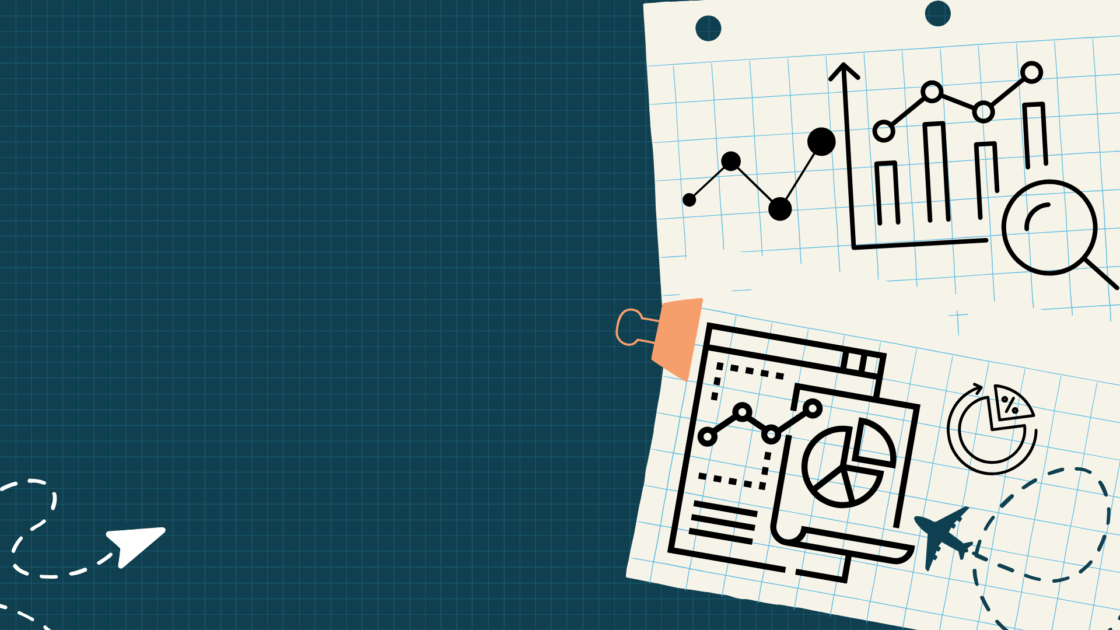Targeting Success: A Guide to Effective B2B Market Segmentation
Targeting Success: A Guide to Effective B2B Market Segmentation
A LinkedIn study found that 80% of companies using market segmentation see their sales numbers climb. This strategy becomes even more critical for the B2B market, which is often more complex and requires a more significant investment.
In this guide, we will discuss everything about B2B market segmentation, from sales strategy to implementation.
What Is B2B Market Segmentation?
B2B market segmentation is the process of dividing their target market into smaller, more defined categories based on factors such as industry, company size, needs, or geographic location.
Market segmentation enables B2B companies to:
- Craft targeted marketing messages.
- Develop products that meet precise requirements.
- Establish stronger and more profitable client relationships.
The main difference between customer and market segmentation lies in their focus areas. Customer segmentation categorizes a company’s existing customer base into groups with common traits.
On the other hand, B2B market segmentation targets the broader market to identify and attract potential customers by recognizing and serving their specific needs.
Example:
Consider a company offering cybersecurity solutions that segments its market into three categories:
- Small tech startups (look for scalability)
- Mid-sized financial firms (need robust data protection for compliance)
- Large healthcare providers (require stringent privacy measures)
This segmentation allows the cybersecurity firm to customize its marketing messages and B2B product solutions for each segment, maximizing sales enablement potential.
Types of B2B Market Segmentation
B2B market segmentation can be divided into several types:
Firmographic Segmentation
Firmographic segmentation in B2B focuses on characteristics of the businesses, such as:
- Industry type
- Company size
- Number of employees
- Annual Revenue
- Location
This segmentation helps in understanding the structural aspects of potential clients.
Example: A digital marketing agency may offer specialized services for small businesses in the retail sector, differentiating its offerings from those aimed at large enterprises in the manufacturing industry.
Psychographic Segmentation
Definition: This segmentation type looks at the cultural, societal, and psychological attributes of businesses, including company culture, values, and goals.
It’s more about the ‘personality’ of businesses and how they align with the service or product being offered.
Example: A corporate training provider might create specific programs for companies that prioritize innovation and continuous learning instead of those with a more traditional approach to employee development.
Behavioral Segmentation
Definition: Behavioral segmentation focuses on how businesses act, including buying patterns, usage rates, and loyalty. It can provide insights into how businesses interact with products or services over time.
Example: A cloud services provider might segment the market based on how frequently businesses upgrade their service plans or how much they utilize customer support services, offering tailored packages or support based on these behaviors.
Tier-Based Segmentation
Tiering segmentation, or customer tiering, categorizes customers based on their potential value to the company.
This can be determined by projected revenue from the customer over the relationship’s lifespan or how well the customer aligns with the company’s sales and marketing strategies.
Example: A company offering premium consulting services might segment its customers into tiers based on expected revenue.
In this way, the company can dedicate more resources and offer higher levels of service to top-tier clients who are anticipated to bring in more business while maintaining relationships with lower-tier clients through scaled services.
Journey Stage Segmentation
Journey stage segmentation categorizes potential clients based on their position in the buying process, which typically includes the following stages:
- Awareness
- Consideration
- Decision
- Loyalty
- Advocacy
Example: A B2B software company might use different marketing tactics for businesses that are just becoming aware of a need (awareness stage) versus those actively evaluating software options (consideration stage) or ready to purchase (decision stage), providing relevant content and messaging for each stage.
How to Conduct B2B Market Segmentation?
Here’s how to conduct B2B market segmentation for more targeted and effective marketing:
Identify Your Target Market
Figure out your Total Addressable Market (TAM), which means the full potential sales pie for your product or service. It’s every single account out there that could get value from what you’re offering.
To accurately identify your target audience, consider these steps:
- Analyze Your Existing Customers: Look at your current customer base to find common characteristics and reasons they chose your product.
- Define Your TAM: Determine the overall market demand for your product or service. Assess factors such as the size of the industry, its growth rate, and geographic regions to estimate your TAM accurately.
Gather Data About Your Target Market
Once you know who you’re targeting, it’s time to dig deeper.
- Conduct Market Research: Combine primary research (surveys, interviews) with secondary research (industry reports, competitor analysis).
- Analyze the Competition: Look at who they’re targeting, what’s working, and what’s not.
- Use Analytics Tools: Leverage tools like Google Analytics, Salesforce, and Hubspot to analyze market trends, customer behavior, and potential growth areas.
Choose Your Segmentation Criteria
Choosing between the following paths shapes your marketing journey ahead:
- Firmographic: Industry type, company size, location, revenue.
- Psychographic: Company culture, values, and priorities.
- Behavioral: Purchase history, usage patterns, service interactions
- Journey Stage: Awareness, consideration, decision, loyalty, advocacy
- Tiering: Revenue potential, strategic fit, resource allocation priorities.
A sales enablement consultant can suggest the perfect fit criteria for your organization.
Segment Your Target Market
B2B market segmentation will act as the lens through which you view your market, breaking it into manageable, targetable segments.
For example, tiering segmentation prioritizes your customers based on their value to your business. For example, a SaaS company might categorize clients into tiers based on subscription levels or expected lifetime value.
On the other hand, behavioral segmentation is about the nuances of how businesses interact with your product or service. A company might analyze usage data to identify which clients could benefit from additional features or support or tailor communication strategies based on how different segments interact with their marketing content.
Analyze Your Segments
The next crucial step is to analyze these segments to understand their viability and potential for your B2B business.
Here are some factors to consider:
- Size: How many potential buyers are in the segment?
- Growth: Is the segment expanding?
- Needs: What specific problems does the segment face?
- Budget: Can the segment afford your solution?
- Competition: Who else is targeting this segment?
- Regulations: Are there legal factors to consider?
- Tech Adoption: Is the segment open to new tech?
- Decision Makers: Who makes the purchase decisions?
- Loyalty: Do businesses in the segment already have preferred vendors?
- Accessibility: Can you easily reach the segment with your marketing and distribution channels?
Create Buyer Personas
Buyer personas are detailed profiles of fictional characters representing your ideal customers within each segment. These personas define the typical decision-maker or influencer in the buying process of your target segment by including:
- Demographic details
- Business needs
- Goals
- Challenges
- Behavioral traits
For instance, a persona for a B2B software company might be “Tech-Savvy Tina,” a CTO at a mid-sized manufacturing company looking for scalable software solutions to improve operational efficiency.
The persona should detail Tina’s daily challenges, her role in the purchase process, and what she values most in a solution and a vendor.
How to Use B2B Market Segmentation?
You’ve laid the groundwork for targeted, efficient, and impactful marketing strategies. Now, it’s time to put those insights to work.
Let’s discuss how you can turn segmentation insights into winning marketing campaigns.
Develop Targeted Marketing Campaigns
Start by aligning your campaign’s messaging with each segment’s needs and challenges. For example, if you’ve identified a segment of small tech startups looking for scalable solutions, your campaign should highlight how your product grows with their business.
Here are some tips for creating B2B campaigns that hit the mark:
- Choose the Right Channels: Different segments may prefer different communication channels. While LinkedIn might be effective for reaching decision-makers in large corporations, a more niche industry forum could be the key to engaging smaller specialist businesses.
- Consider Buying Stage: Create content that caters to different stages of the buying journey within each segment, from educational blog posts for those in the awareness stage to detailed comparisons for decision-ready businesses.
- Use Retargeting: Implement retargeting campaigns tailored to the interactions and interests of each segment to keep your brand top of mind.
- Analyze and Adjust: Continuously measure campaign performance within each segment to refine and improve your strategy for better engagement and conversion rates.
Create Personalized Sales Pitches
Would you rather pitch a cost-saving solution to a high-growth startup or a feature-rich platform to an established enterprise? B2B customer segmentation helps you do just that, ensuring your message resonates deeper and more meaningfully.
So, how do you craft personalized sales pitches that hit home?
- Use language that each segment understands and resonates with.
- Focus on how your product solves the unique problems of B2B customers.
- Highlight benefits that align with their specific needs and challenges.
- Quantify the value proposition with data and case studies that resonate with each segment.
- Test different messaging approaches and track results.
Develop New Products and Services
Segmentation isn’t just about selling better; it’s about innovating smarter.
Imagine you discover a customer segment struggling with a specific pain point your current offerings don’t address. This sparks the new product development that solves their problem perfectly.
Here’s how you can motivate your sales team to develop new products and services using B2B market segmentation:
- Equip them with the tools to analyze purchase history, usage patterns, customer feedback, and social media activity within each segment. What are their buying behaviors? What features go underutilized? What pain points lurk beneath the surface?
- Develop quick prototypes – think minimum viable products, MVPs – that allow you to test core concepts with each segment. Utilize existing customer relationships, conduct targeted surveys or focus groups, and gather honest feedback.
- Gather a team that reflects the richness of your customer base. Sales reps from different segments, B2B marketers, product developers, and even customer service reps – each perspective adds a vital piece to the puzzle.
Improve Customer Service
Let’s explore how you can improve customer service through segmentation.
- Dedicated Support Teams: Assign dedicated support teams or account managers for each segment. These teams should be well-versed in their assigned segment’s challenges and needs.
- Segment-Specific Resources: Create resources such as knowledge bases, FAQs, and self-help guides specific to each segment’s challenges and questions.
- Service Level Agreements (SLAs): Develop SLAs tailored to each segment, specifying response times, resolution times, and service quality expectations.
- Segment-Specific Events: Host webinars, workshops, or events catering to the interests and concerns of each segment.
- Feedback and Surveys: Regularly collect feedback and conduct surveys within each segment to understand their satisfaction levels and areas for improvement.
Conclusion
B2B segmentation requires a deep dive into market analysis, strategic thinking, and the ability to craft marketing efforts that resonate with each unique segment.
But you don’t have to figure it out alone. Aventi Group steps in exactly where you need us. Our product marketing agency helps you identify and target your ideal market segments, crafting resonating messages and building lasting customer relationships.
Ready to make a mark? Let’s chat.






